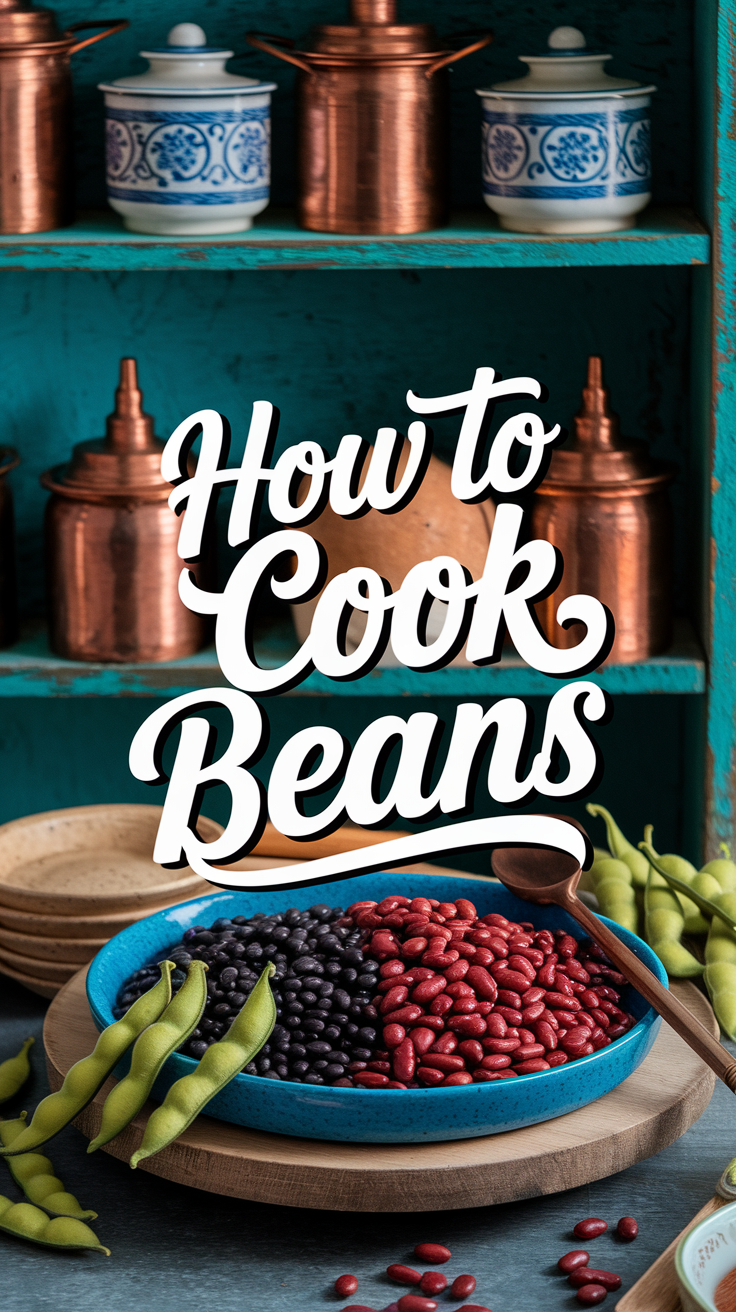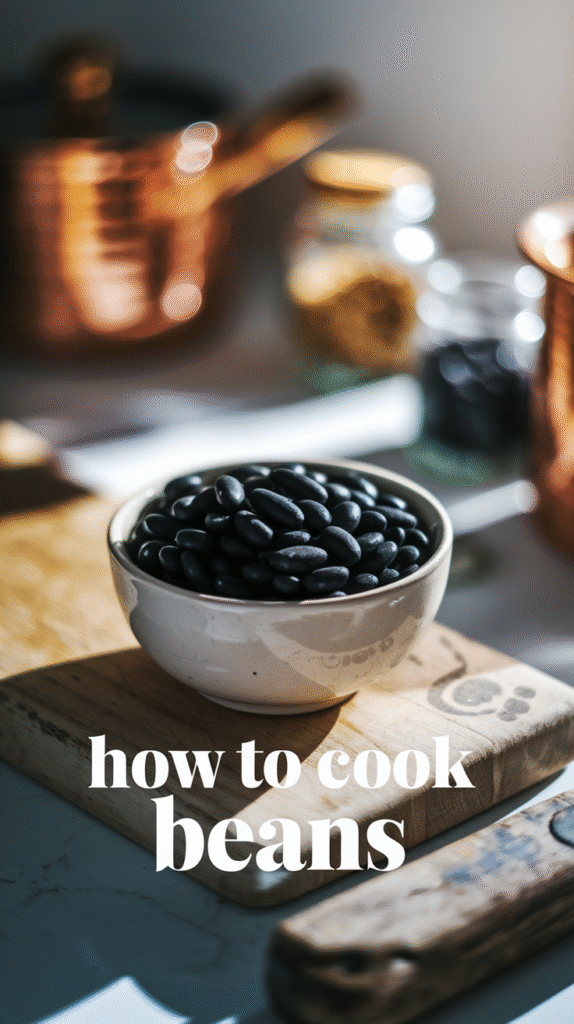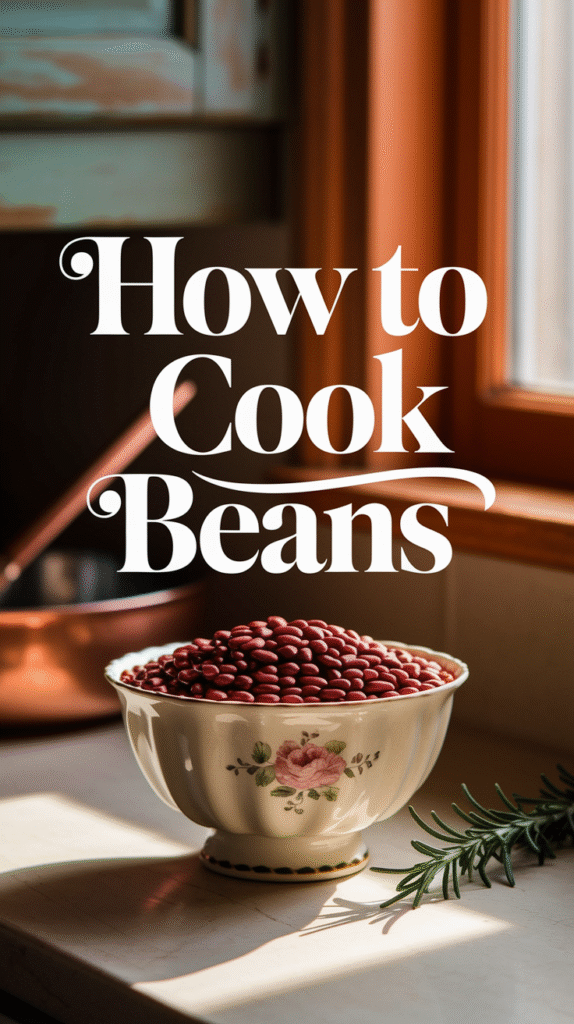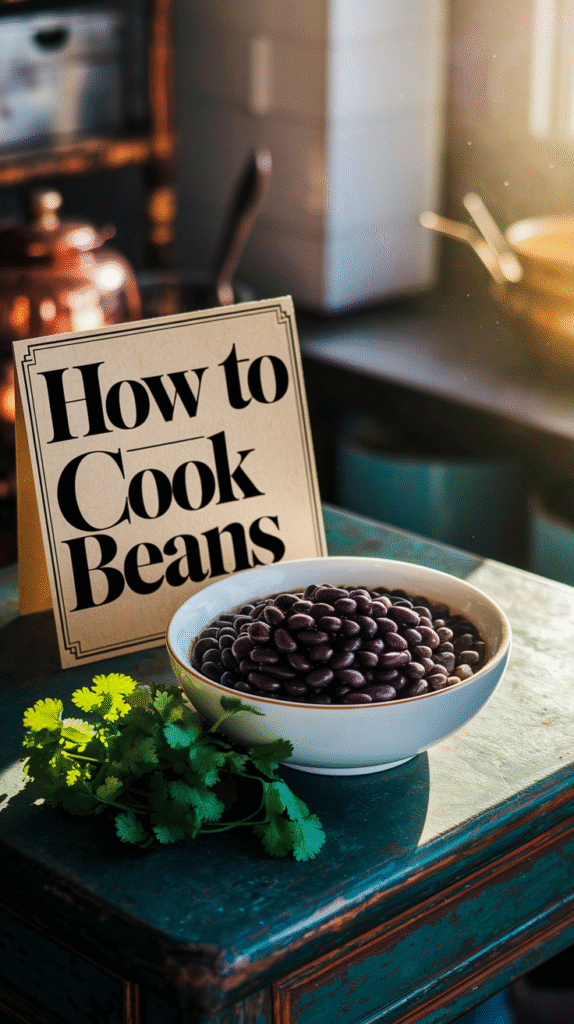Cooking beans is a rewarding experience that provides not only a nutritious addition to your meals but also a culinary opportunity to explore various flavors and textures. Here are essential techniques to ensure you cook beans perfectly every time.
Choosing the Right Beans
It’s important to start with the right type of beans according to your dish. Here are some common varieties:
- Black Beans: Great for tacos and soups.
- Pinto Beans: Ideal for refried beans and chili.
- Kidney Beans: Best suited for hearty stews.
- Chickpeas: Perfect for hummus and salads.
- Lentils: Quick-cooking and ideal for soups.
Visit Bean Institute for more information on various beans and their uses.
Preparing Beans
Before cooking, you’ll need to prepare your beans properly. Here are the steps you should follow:
1. Rinsing
Always rinse beans under cold running water to remove dirt or debris. This step is crucial for both canned and dried beans.
2. Soaking
Soaking beans helps reduce cooking time and makes them easier to digest. You can either:
- Overnight Soak: Submerge beans in enough water to cover them and leave overnight.
- Quick Soak: Boil beans in water for 2-3 minutes, then let them sit for an hour.
Cooking Methods
Once your beans are prepared, it’s time to cook them. Here are effective methods:
1. Stovetop Cooking
Put soaked beans in a pot, covering them with 2 inches of water. Bring to a boil, then lower the heat and simmer for 1-2 hours, depending on the type of bean. Stir occasionally and add more water if needed.
2. Pressure Cooking
This is a quick and efficient way to cook beans. Add soaked beans and enough water to a pressure cooker. Cook on high pressure for 10-15 minutes, then release the pressure naturally.
3. Slow Cooking
For a hands-off approach, use a slow cooker. Combine soaked beans with water and your favorite seasonings. Cook on low for 6-8 hours or high for 3-4 hours.
For more detailed recipes, you might check out Simply Recipes, where you can find an array of bean dishes catered for all cooking styles.
Tips for Flavors and Textures
Enhance the flavor of your beans by adding ingredients during cooking:
- Onions and Garlic: Sauté before adding beans for depth of flavor.
- Spices: Bay leaves, cumin, and chili powder can complement beans beautifully.
- Salt: Avoid adding salt until the beans are tender to prevent tough skins.
Don’t forget to taste and adjust the seasoning as you go!
Storing Cooked Beans
Cooked beans can be stored in the refrigerator for up to a week. Use airtight containers to keep them fresh. You can also freeze beans for longer storage – just make sure they’re cooled first.
Common Mistakes to Avoid
Here are mistakes to watch out for when cooking beans:
| Mistake | Solution |
|---|---|
| Not soaking beans | Always soak beans to improve texture and reduce cooking time. |
| Adding salt too early | Only add salt after the beans are cooked to ensure tenderness. |
| Overcooking | Monitor cooking times to avoid mushiness; beans should be tender but not falling apart. |
By mastering these techniques on how to cook beans, you will undoubtedly elevate your cooking skills. Beans are not only affordable but also versatile and packed with nutrients. Dive into experimenting with different recipes and flavors, and let your culinary journey begin!
For additional insights and recipes, consider visiting Food Network, where you’ll find a plethora of bean-focused recipes to inspire your next meal.
Exploring Different Types of Beans and Their Cooking Methods
Beans are a staple food in many cultures around the world, admired for their versatility, nutritional value, and affordability. Learning how to cook beans properly can open a door to a variety of delicious meals. Below, we explore different types of beans and their unique cooking methods, ensuring you get the most out of these leguminous superfoods.
Common Types of Beans
Beans come in many varieties, each with distinct flavors, textures, and uses in cooking. Here are some of the most common types of beans:
- Black Beans: These small, shiny beans are popular in Latin American dishes. They are rich in protein and fiber.
- Pinto Beans: Known for their creamy texture, pinto beans are often used in Mexican cuisine, especially in refried beans.
- Kidney Beans: With their deep red color, kidney beans are hearty and often used in chili and soups.
- Chickpeas: Also known as garbanzo beans, these are essential in Middle Eastern dishes like hummus and falafel.
- Lentils: Although technically not beans, lentils are often cooked similarly and come in varieties like green, brown, and red. They are quick-cooking and nutritious.
Basic Cooking Methods
Understanding how to cook beans is crucial. Here are three main methods you can use:
1. Soaking and Boiling
This traditional method is commonly used for dried beans. Here’s how to do it:
- Rinse: Sort through your dried beans to remove any debris. Rinse them under cold water.
- Soak: Place the beans in a bowl, cover with water, and soak for 6-8 hours or overnight. This reduces cooking time and helps with digestion.
- Boil: Drain the soaking water, place beans in a pot, and cover with fresh water. Bring to a boil, then reduce heat and simmer until tender (typically 1-2 hours depending on the bean type).
2. Pressure Cooking
Pressure cooking is a faster alternative that retains flavors and nutrients. Follow these steps:
- Rinse: As above, rinse and sort your beans.
- No Soaking Method: You can cook beans directly, without soaking. For most beans, add three cups of water per cup of beans.
- Cook: Close the lid, set the pressure, and cook the beans according to the manufacturer’s instructions. Typically, cooking time ranges from 10-30 minutes.
3. Slow Cooking
Using a slow cooker is a convenient way to prepare beans with minimal effort. Here’s how:
- Rinse: Similar to the previous methods, rinse your beans thoroughly.
- Add Ingredients: Place beans in the slow cooker with water or broth, and season as desired. You can add vegetables for extra flavor.
- Cook: Cover and set on low for 6-8 hours or high for 3-4 hours, until beans are tender.
Unique Beans and Their Uses
Different beans pair well with specific recipes. Here are some beans and their popular uses:
| Bean Type | Common Uses |
|---|---|
| Black Beans | Tacos, soups, and salads. |
| Pinto Beans | Refried beans, burritos, and chili. |
| Kidney Beans | Chili, salads, and stews. |
| Chickpeas | Hummus, curries, and salads. |
| Lentils | Soups, salads, and side dishes. |
For more inspiration and recipes, you can check out Bean Institute.
Cooking beans not only provides a fantastic source of protein and fiber but also allows you to experiment in the kitchen. Whether you are a beginner or an expert, these tips will guide you in mastering the art of cooking beans.
Explore more creative bean dishes and cooking techniques at Love and Lentils to make the most of these delicious legumes.
The Health Benefits of Including Beans in Your Diet
Including beans in your diet can lead to several significant health benefits. These nutrient-rich legumes are not only versatile in cooking but also packed with essential vitamins and minerals. Whether you choose black beans, kidney beans, pinto beans, or chickpeas, there are numerous reasons to consider adding them to your meals.
Rich Source of Nutrients
Beans are an excellent source of various nutrients, including:
- Protein: Beans provide a great plant-based protein option, making them a favorite among vegetarians and vegans.
- Fiber: High in dietary fiber, beans can help promote digestive health and prevent constipation.
- Vitamins and minerals: Beans contain essential vitamins such as folate and B vitamins, as well as minerals like iron, magnesium, and potassium.
Heart Health
Including beans in your diet can significantly benefit your heart health. They are low in saturated fat and cholesterol, making them an excellent option for maintaining healthy blood pressure and cholesterol levels. Moreover, the high fiber content aids in lower cholesterol levels, thereby reducing the risk of heart disease. According to a study published by the American Heart Association, diets rich in legumes are associated with a lower risk of heart-related issues.
Weight Management
If you are looking to maintain or lose weight, beans can be incredibly helpful. The fiber and protein in beans contribute to a feeling of fullness, which can reduce overall calorie intake. Consuming meals that include beans may help control hunger, leading to healthier eating patterns over time. In fact, a study indicated that people who incorporate more legumes in their diets often experience better weight management.
Blood Sugar Control
Beans have a low glycemic index, meaning they release sugars slowly into the bloodstream. This steady release helps maintain stable blood sugar levels, greatly beneficial for those with diabetes or at risk for the condition. Regular consumption of beans has been linked to improved insulin sensitivity and better blood sugar control.
Gut Health
Maintaining gut health is crucial for overall well-being, and beans can play a significant role. The soluble fiber in beans acts as a prebiotic, feeding the beneficial bacteria in your gut. A healthy gut microbiome is essential for effective digestion and can support your immune system. Research published on the National Institutes of Health website highlights that including fiber-rich foods like beans can lead to a diverse and healthy gut environment.
Improved Digestion
The high fiber content in beans not only aids in weight management and heart health but also enhances digestion. Fiber helps move food through your digestive tract, preventing constipation and promoting regularity. beans into your meals can be a simple strategy to maintain optimal digestive health.
Affordable Nourishment
In addition to their nutritional benefits, beans are a cost-effective food option. They are relatively inexpensive compared to other protein sources like meat or fish. Buying dried beans in bulk can save you money while providing essential nutrients. Canned beans are also a convenient option, just remember to rinse them to reduce sodium content.
Simple Ways to Include Beans in Your Diet
Here are a few easy ways to incorporate beans into your daily meals:
- Add beans to salads for extra protein and fiber.
- Use beans as a meat substitute in tacos or chili.
- Blend beans into soups or stews for creaminess without the dairy.
- Mix beans into grain bowls with vegetables for a hearty lunch or dinner.
Incorporating beans into your diet offers numerous health benefits. From supporting heart health and weight management to improving digestion, these legumes are an excellent addition to a balanced diet. To learn more about the nutritional advantages of beans, visit Eat Right for further guidance.
With their versatility, affordability, and health benefits, beans can easily become a staple in your meals. Start experimenting today to discover delicious ways to enjoy this nutrient-dense food while reaping the many benefits it provides.
Quick and Easy Bean Recipes for Busy Weeknights
Cooking beans for a quick weeknight meal can be simple and satisfying. Whether you prefer black beans, chickpeas, or kidney beans, these versatile ingredients can become the base of numerous delicious dishes. Here are some quick and easy bean recipes that will help you avoid the evening rush while still enjoying healthy and tasty meals.
1. One-Pot Bean Chili
Chili is a classic dish that can be tailored to suit any palate. This one-pot bean chili is not only quick to prepare, but it also combines flavors that your whole family will love.
- Ingredients: 1 can black beans, 1 can kidney beans, 1 can diced tomatoes, 1 onion (chopped), 1 bell pepper (chopped), 2 cloves garlic (minced), 1 tablespoon chili powder, 1 teaspoon cumin, salt, and pepper to taste.
- Instructions:
- In a large pot, sauté onions, bell pepper, and garlic until soft.
- Add all the beans, diced tomatoes, chili powder, cumin, salt, and pepper.
- Stir well and let it simmer for about 20 minutes.
- Serve hot, and top with cheese or avocado if desired.
2. Easy Bean Salad
This refreshing salad can be prepared in under 15 minutes and is perfect for a light dinner or as a side dish.
- Ingredients: 1 can chickpeas, 1 can black beans, 1 cup corn, 1 cup cherry tomatoes (halved), 1/4 cup red onion (diced), 1/4 cup cilantro (chopped), juice of 1 lime, salt, and pepper.
- Instructions:
- Drain and rinse the chickpeas and black beans.
- In a large bowl, mix all ingredients, including lime juice, salt, and pepper.
- Toss well and let sit for a few minutes before serving.
3. Bean and Cheese Quesadillas
Quesadillas are a great opportunity to use leftover beans and cheese. They are quick to make and incredibly satisfying.
- Ingredients: 1 can refried beans, 1 cup shredded cheese (cheddar or Mexican blend), tortillas, salsa, and avocado.
- Instructions:
- Spread refried beans on one side of a tortilla.
- Sprinkle cheese on top of the beans and fold the tortilla in half.
- Heat a skillet over medium heat and cook the quesadilla until golden brown on both sides, about 3-4 minutes per side.
- Serve with salsa and slices of avocado.
4. Bean Stroganoff
This creamy pasta dish is a twist on the traditional stroganoff, incorporating beans for a hearty texture.
- Ingredients: 1 can white beans, 8 oz mushrooms, 1 onion (chopped), 2 cups vegetable broth, 1 cup sour cream, 1 tablespoon soy sauce, 1 teaspoon garlic powder, and pasta of your choice.
- Instructions:
- Cook pasta according to the package instructions.
- In a pan, sauté onions and mushrooms until tender.
- Add broth, white beans, soy sauce, and garlic powder. Simmer for about 5 minutes.
- Stir in sour cream, then combine with the cooked pasta and serve.
When you’re busy during the week, cooking beans can simplify your meal prep. Beans are not only affordable but also packed with protein and nutrients. They can easily be incorporated into many dishes, allowing for variety and creativity in your weeknight meals.
For more tips and recipes on cooking beans, check out Cooking Light for nutritious options or visit Allrecipes for diverse bean recipes to suit all tastes. Remember, prep can be quick and easy, enabling you to enjoy delicious meals stress-free!
Common Mistakes to Avoid When Cooking Beans
Cooking beans can be a rewarding experience, but many home cooks stumble due to common mistakes. Avoiding these errors ensures delicious and healthy beans every time. Here are some of the most frequent pitfalls to watch out for.
Skipping Soaking
One of the biggest mistakes is skipping the soaking step. Although some beans can be cooked without soaking, most benefit from it. Soaking helps reduce cooking time and makes beans easier to digest. There are two methods to soak beans:
- Overnight soak: Submerge the beans in water and let them sit for 8 hours or overnight.
- Quick soak: Boil the beans in water for 2 minutes, then remove from heat and let them sit for 1 hour.
Cooking Beans with Salt at the Start
Many people believe that adding salt at the beginning enhances flavor. However, this can actually lead to tough beans. Salting too early can prevent the beans from cooking through properly. Instead, add salt during the last 10 to 15 minutes of cooking to preserve texture.
Using Hard Water
If your tap water is hard, it can affect the texture of the beans. Hard water contains high levels of calcium and magnesium, which can slow down the cooking process and result in beans that are still hard after prolonged cooking. If you suspect your water is hard, consider using filtered or bottled water for cooking beans.
Cooking Beans at Too High a Temperature
Cooking beans at a rapid boil can lead to uneven cooking. Instead, maintain a gentle simmer to allow the beans to cook evenly. This method takes longer, but the texture will be much better. A good rule of thumb is to keep the bubbles just breaking the surface.
Neglecting the Beans While Cooking
It can be tempting to set a timer and walk away, but beans require your attention. Stirring occasionally ensures even cooking and prevents sticking or scorching. Check the beans periodically to assess their doneness and add water if necessary.
Overlooking the Cooking Time
Every type of bean has its own cooking time. For instance, black beans typically take around 60-90 minutes, while lentils can cook in as little as 20-30 minutes. Always check a cooking guide for specific times, as overcooking can turn them mushy. Here is a quick reference for common beans:
| Bean Type | Soaking Time | Cooking Time |
|---|---|---|
| Black Beans | 8 hours | 60-90 minutes |
| Chickpeas | 8 hours | 90-120 minutes |
| Pinto Beans | 8 hours | 60-90 minutes |
| Lentils | No soak | 20-30 minutes |
Disregarding Flavor Enhancements
Cooking beans doesn’t have to be bland. other flavor elements like onions, garlic, herbs, and spices can elevate the dish. However, add these enhancing ingredients towards the end of cooking so their flavors don’t dissipate.
Failing to Store Properly
Improper storage can lead to spoiled beans. After cooking, cool beans completely before storing in an airtight container. They can be kept in the refrigerator for up to a week or frozen for up to six months. Proper storage not only helps retain flavor but also maintains nutritional value.
For more tips and delicious recipes, visit The Bean Institute or explore helpful cooking guides at Cook’s Illustrated.
By avoiding these common mistakes, you can master the art of cooking beans. With practice and attention, you’ll enjoy perfectly cooked beans that are nutritious and full of flavor.
Conclusion
Cooking beans can be a rewarding and beneficial experience, both for your palate and your health. By mastering essential techniques and exploring different types of beans, you can elevate your culinary skills and discover a world of flavors. Whether you prefer black beans, kidney beans, or chickpeas, each variety offers unique cooking methods that enhance their natural taste and texture.
Beans into your diet brings numerous health benefits, including high protein content, fiber, and essential nutrients. With quick and easy recipes, even the busiest of schedules can accommodate delicious bean dishes, making them an ideal choice for weeknight meals.
However, it’s essential to avoid common mistakes that can hinder your cooking experience. Proper soaking, cooking times, and seasoning techniques can make all the difference in achieving perfectly cooked beans every time.
Embrace the versatility of beans, and don’t hesitate to experiment with different recipes and cooking styles. Whether you’re adding beans to salads, stews, or chili, you’ll create hearty meals that nourish your body and satisfy your taste buds. With these insights and tips in hand, you’re well on your way to becoming a bean-cooking pro. Enjoy the journey and relish the many flavors and benefits these little legumes have to offer!







Leave a Reply